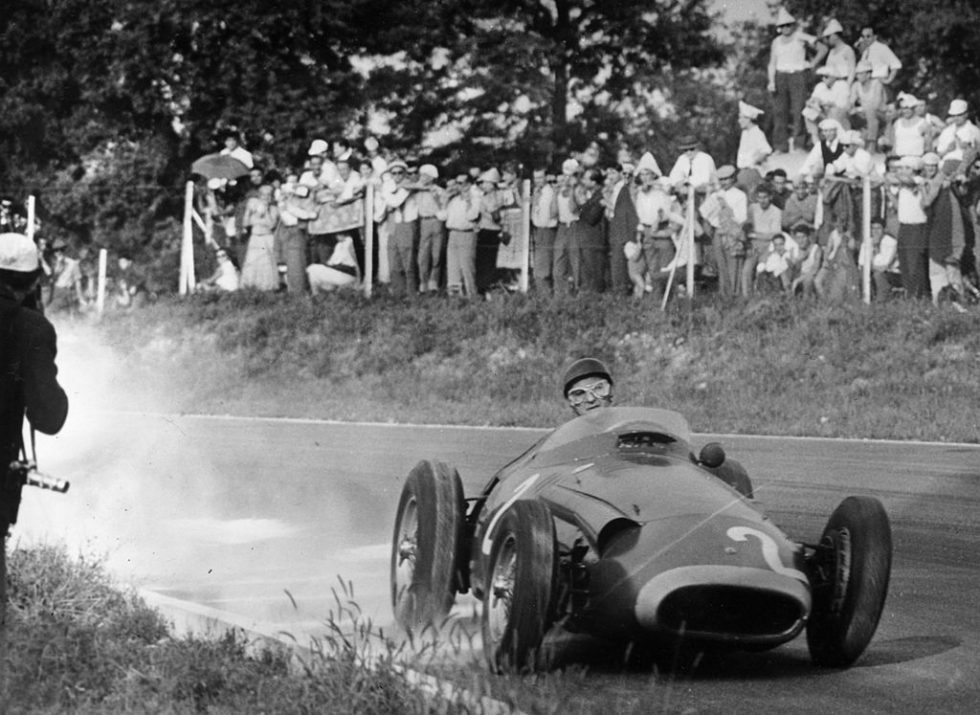
We're pretty sure fans of all sports love a good argument over who is "the greatest of all time." Will Stephen Curry soar higher than Michael Jordan at his mid-'90s apogee? Will Tom Brady eclipse Johnny Unitas? This is the stuff of countless hours of barroom banter. Formula 1 is no different. But given how much cars have changed over the years, is it even possible to compare different eras?
Andrew Bell and his colleagues at the University of Sheffield think so, and this team has just published a paper in the Journal of Quantitative Analysis in Sports offering proof that Juan Manuel Fangio owns the crown.
Most sports change over time, but the Formula 1 World Championship—first held in 1950—has changed a great deal over the past six-and-a-half decades. A 1950s F1 car looked like a cigar tube with wheels. The engine was in front of the driver, and there were no wings or spoilers. (Or seat belts, for that matter.) In the early 1960s, front-engined cars were made obsolete when John Cooper put the driver ahead of the power unit. Later that decade Colin Chapman at Lotus was responsible for a string of innovations, from fully stressed engines (bolted to the monocoque and carrying the rear suspension) to aerodynamics. Then we got ground effects, carbon composite construction, an ever-increasing regard for safety, and finally hybrid powertrains.
The championship season itself has changed numerous times; races are generally shorter, but there are many more in a season, and every few years the number of points one gets for a win changes, too. It's also a far more professional sport—the days of three dudes traveling around Europe in an old Ford Transit towing their car and winning on Sunday are long-gone. Budgets at the sharp end of the sport run to several hundred million dollars a year, with hundreds of team members collectively working toward finishing first.
Bell's paper goes beyond simply looking at race wins for individual drivers. As any motorsports fan will tell you, even the best driver will struggle to win with a bad car (or team), and so the models used attempt to control for this. Or, as the authors put it, "The finishing position of drivers is used as the response variable in a cross-classified multilevel model that partitions variance into team, team-year and driver levels. These effects are then allowed to vary by year, track type and weather conditions using complex variance functions."
Perhaps we ought not be too surprised that Fangio tops the table. After all, in most subjective lists compiled by people in the sport, his name usually ranks above all others even decades later. His performance at the treacherous Nurburgring Nordschleife in 1957 alone merits mention. After losing a minute and a half to a botched wheel change, he chased down his rivals with a scarcely believable pace, shattering the lap record for the 14-mile track nine times:
Alain Prost and Fernando Alonso occupy the next two spots, although there are large confidence intervals around each driver in part because the study used finishing position per race (where there can be a large variance because of things like crashes or car failures).
Interestingly, Michael Schumacher only ranks sixth despite records that may never be broken—91 wins, 68 pole positions, and seven world championships. The cause? His return to the sport after three years in retirement, when he wasn't ever able to best then-teammate Nico Rosberg. When Schumacher's 2010-2012 seasons are ignored, he displaces Alonso for third best ever.
-
Alain Prost—Le Professeur. A more cerebral driver than his arch rival Ayrton Senna, he won four titles.
-
Fernando Alonso is the third best F1 driver according to this analysis. Had he picked better teams along the way, he'd almost certainly have more than just two World Drivers Championships.
-
Jim Clark, seen here at the Indianapolis 500 in 1965 (the 500 used to count towards the F1 World Championship).
-
Ayrton Senna at Monaco in 1992.
-
Michael Schumacher was often called the Rain Master—the stats confirm he was extremely good in the wet. Had he not come back to the sport after a three-year retirement, he would have ranked even higher in Bell's analysis.
Digging into the data a little more allows drivers to be ranked by their skill at various kinds of races (permanent circuits, street courses, or temporary circuits), as well as in the wet and dry. Fangio continues to shine, with the exception of temporary tracks (these are different from street courses) where Schumacher shined even brighter.
But those pub bores who insist that it's all down to the car are mostly right. As the paper puts it, "the team effects significantly outweigh the driver effects, accounting for 86 percent of driver variation. Furthermore, the majority (about two-thirds) of the team effect is constant for a team and does not change year-on-year (although there is substantial variation within teams, year-on-year as well). In other words, the legacy of a team outweighs any transient effects as teams change year by year."
Even the best driver will struggle in an underperforming team. After all, just ask Fernando Alonso, who hasn't won a championship since 2006...
J Quant Anal Sports, 2015. DOI: 10.1515/jqas-2015-0050 (About DOIs).
reader comments
78